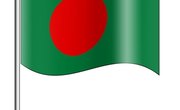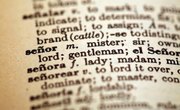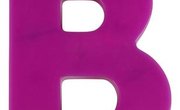The Mohawk were part of the Iroquois Confederacy, along with the Seneca, Oneida, Onondaga and Cayuga. This sophisticated confederacy had a constitution and an elaborate decision-making process that required absolute unanimity. Mohawk is spoken today by about 3,350 people, many of whom are elderly, in Ontario, Quebec and New York state, according to Omniglot. Kanien'keha or "people of the flint" -- as Mohawk is known by native speakers -- is an Iroquoian language that has been taught in some schools since 1970. Written Mohawk was developed by Jesuit missionaries, so the language follows French pronunciation. The Mohawk are known for their distinct hairstyle and their remarkable sense of balance that makes them ideal skyscraper builders.
Step 1
Download a Mohawk language program. A language program that includes written exercises you can print is preferable, as it reinforces the online audio learning.
Step 2
Start a Mohawk vocabulary book. Record both single words -- such as "teiohonwa" for canoe or "okariate" for mosquito --and phrases like "wakkawehatie," I paddle along.
Step 3
Learn to listen to the difference between the falling tone, the high tone and the rising tone of the long vowels. As with all tonal languages -- including Chinese and Korean -- changing the tone can alter the meaning of the word.
Step 4
Study the different Mohawk dialects. The Mohawk Language Standardization Project reports that the "w" sound at the end of some Mohawk words, such as "te:sekw" as opposed to "te:sek," separates the dialects. Other audio differences include "ki" as opposed to "ti" and "tas" versus "tsia."
Step 5
Work on the glottal stop, which is indicated by an apostrophe in written Mohawk. The BBC advises that many languages -- including English -- have letters at the end of words that aren't pronounced. While the letters are dropped, the "sound" is recognized, such as the "tee" at the end of English words like "bolt" or "put."
Step 6
Download a Mohawk dictionary online. Omniglot reports that a standardized form of Mohawk was agreed to at a conference in 1993, so regional dialects are not a problem when spelling Mohawk words.
Step 7
Use an online translation program to keep a diary and write reports. Study historical figures online, such as Kahn-Tinta Horn, an activist; Pauline Johnson, a poet; and Joseph Brant, an orator.
Related Articles
References
Writer Bio
Jody Hanson began writing professionally in 1992 to help finance her second around-the-world trip. In addition to her academic books, she has written for "International Living," the "Sydney Courier" and the "Australian Woman's Forum." Hanson holds a Ph.D. in adult education from Greenwich University.











